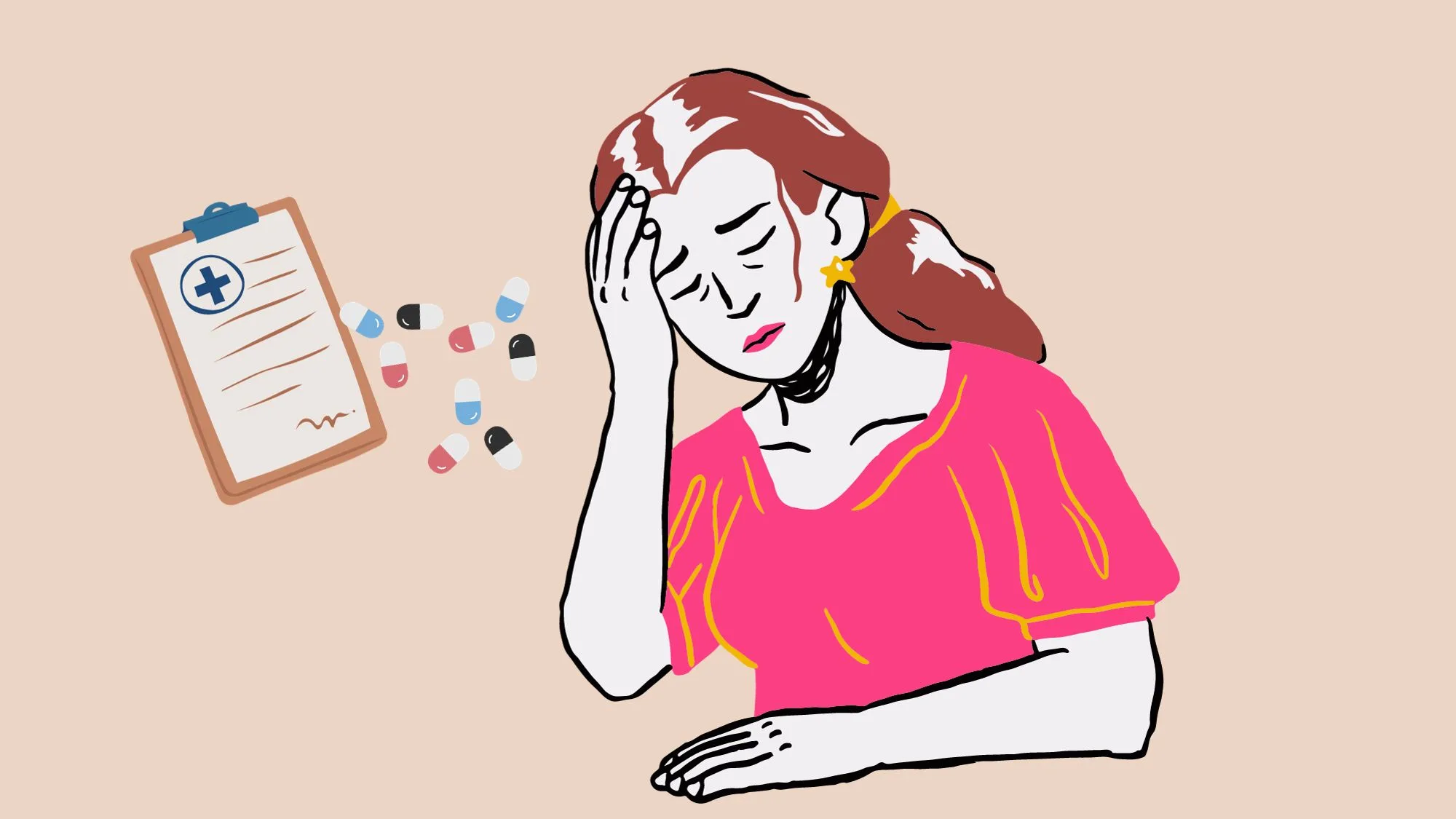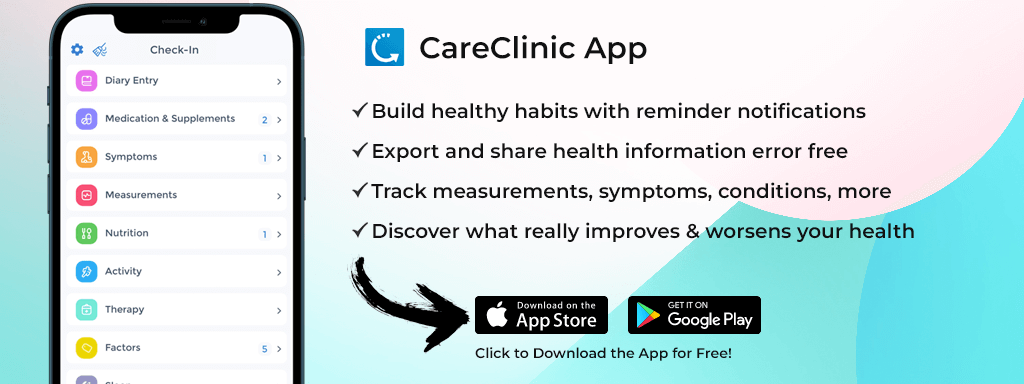
Are you one of the many migraine sufferers who find that sumatriptan, a commonly prescribed medication for migraine relief, doesn’t seem to work for you? Migraine not responding to sumatriptan? If so, you’re not alone. Sumatriptan is an effective medication for many people, but it doesn’t work for everyone. Understanding why sumatriptan may not be effective and exploring alternative treatment options can help you find relief from your migraines.
Understanding Sumatriptan and Its Role in Migraine Treatment
Sumatriptan belongs to a class of medications called triptans, which are specifically designed to target the underlying causes of migraines. They work by narrowing blood vessels in the brain and reducing inflammation, ultimately relieving the intense pain and accompanying symptoms of migraines.
Migraines are a debilitating neurological condition that affects millions of people worldwide. The exact cause of migraines is still not fully understood, but it is believed to involve a combination of genetic, environmental, and hormonal factors. Migraine attacks can be triggered by various factors such as stress, certain foods, hormonal changes, and even changes in weather patterns.
When a migraine attack occurs, it can be extremely painful and disruptive to daily life. The throbbing headache, sensitivity to light and sound, nausea, and vomiting can make it difficult to function. This is where medications like sumatriptan come into play.
The Mechanism of Sumatriptan
Sumatriptan works by binding to serotonin receptors in the brain, causing the blood vessels to constrict and reducing inflammation. By targeting these specific receptors, sumatriptan interrupts the processes that contribute to migraines, providing much-needed relief for many sufferers.
Serotonin is a neurotransmitter that plays a crucial role in regulating various bodily functions, including mood, sleep, and pain perception. In people with migraines, serotonin levels fluctuate, leading to abnormal dilation and inflammation of blood vessels in the brain. Sumatriptan’s ability to bind to serotonin receptors helps restore the balance and alleviate the symptoms of migraines.
Common Reasons for Migraine Not Responding to Sumatriptan
While sumatriptan is effective for a majority of people with migraines, there are several reasons why it may not work for everyone. One common reason is that the dose or formulation of sumatriptan may not be suitable for your specific type of migraine or individual physiology.
Each person’s migraine experience is unique, and what works for one person may not work for another. Finding the right dosage and formulation of sumatriptan often involves a process of trial and error, working closely with a healthcare professional to determine the most effective treatment plan.
However, there are other factors that could contribute to sumatriptan non-responsiveness, such as taking the medication too late during a migraine attack or experiencing medication overuse headache (MOH) due to excessive use of sumatriptan or other acute migraine medications.
Timing is crucial when it comes to using sumatriptan. Taking the medication at the earliest signs of a migraine attack can increase its effectiveness. Delaying its use may result in reduced efficacy or even complete non-responsiveness. It’s important to be aware of your migraine patterns and have a plan in place with your healthcare provider for prompt treatment.
Medication overuse headache (MOH), also known as rebound headache, can occur when acute migraine medications like sumatriptan are overused. This can lead to a vicious cycle of headaches, where the medication that was once providing relief now exacerbates the problem. If you suspect MOH, it’s crucial to seek medical guidance to develop a strategy for managing your migraines effectively.
Important Note for Migraine Not Responding to Sumatriptan
It’s important to keep in mind that individual responses to medications can vary, and what works for one person may not work for another. If sumatriptan isn’t providing the relief you need, it’s time to explore alternative medications. There are several other triptans available, as well as other classes of medications that can be effective in managing migraines. Working closely with your healthcare provider, you can find the right treatment plan that suits your specific needs and provides the relief you deserve.
Exploring Alternative Medications for Migraine
If sumatriptan hasn’t proven effective for your migraines, there are other medications that you can discuss with your healthcare provider as possible alternatives.
Migraines can be debilitating, causing intense pain, sensitivity to light and sound, and nausea. For those who suffer from chronic migraines, finding an effective medication is crucial in managing their symptoms and improving their quality of life.
Triptans: Other Options in the Same Class
Triptans, as a class of medications, include various alternatives to sumatriptan. These medications work by constricting blood vessels in the brain and blocking pain signals.
Different headache medications work better for different people. You might wonder does nurtec work on all headaches if you’re looking for alternatives to triptans. Finding the right medication often takes some trial and error with your doctor’s help.
While sumatriptan may not have provided the relief you were hoping for, it’s important to remember that different triptan medications can have varying degrees of effectiveness for different individuals.
Rizatriptan is one such alternative that your healthcare provider may suggest. It is available in different forms, including orally disintegrating tablets and nasal sprays, providing options for individuals who may have difficulty swallowing pills or experience nausea during a migraine attack.
Zolmitriptan is another triptan medication that can be considered. It has been shown to be effective in relieving migraine symptoms, and it is available in tablet and nasal spray forms as well.
Non-Triptan Medications for Migraine
In addition to triptans, there are also non-triptan medications available to help manage migraines. These medications target different aspects of the migraine process and can be used as alternatives or in combination with triptans.
Ergots, such as dihydroergotamine, are one option. They work by constricting blood vessels and reducing inflammation in the brain. Dihydroergotamine can be administered through injection, nasal spray, or as a suppository, providing flexibility in treatment options.
Anti-nausea medications like metoclopramide and prochlorperazine can also be considered. These medications help alleviate the nausea and vomiting that often accompany migraines, providing relief and improving overall comfort during an attack.
It’s important to remember that not all medications work the same for everyone. Your healthcare provider can help determine which alternative medication may be most appropriate for your specific needs. They will take into account factors such as your medical history, the frequency and severity of your migraines, and any other medications you may be taking.
Exploring alternative medications for migraines is an ongoing process. It may take some trial and error to find the right medication or combination of medications that effectively manage your symptoms. Open communication with your healthcare provider is key in finding the best treatment plan for you.
Lifestyle Changes to Manage Migraine
In addition to medication options, lifestyle changes can play a significant role in managing migraines and reducing the frequency and severity of attacks.
Migraines can be debilitating and greatly impact a person’s quality of life. Fortunately, there are various lifestyle adjustments that can be made to help alleviate the symptoms and prevent future attacks.
Dietary Adjustments for Migraine Control
Certain foods and beverages are known to trigger migraines in some individuals. Keeping a migraine diary to track your diet and correlating it with your migraine attacks can help you identify any specific triggers. This can be a useful tool in managing your migraines effectively.
Common dietary triggers include caffeine, alcohol, aged cheeses, and processed foods. These substances can cause chemical reactions in the brain that lead to migraines. By avoiding these triggers, you may be able to reduce the frequency and intensity of your migraines.
It’s important to note that triggers can vary from person to person, so what may cause a migraine in one individual may not affect another. Experimenting with your diet and keeping track of your findings can provide valuable insights into your personal triggers.
The Role of Exercise and Sleep in Migraine Management
Regular exercise and maintaining a consistent sleep pattern can also help manage migraines. Engaging in low-impact exercises like walking, swimming, or yoga can promote overall wellness and reduce stress, which can be a trigger for migraines.
Exercise releases endorphins, which are natural painkillers and mood boosters. By incorporating exercise into your routine, you can potentially reduce the frequency and severity of migraines. However, it’s important to start slowly and listen to your body to avoid triggering an attack.
Sleep plays a crucial role in migraine management as well. Establishing a regular sleep schedule and prioritizing quality sleep can help prevent migraines from occurring. Lack of sleep or irregular sleep patterns can disrupt the body’s natural rhythm and increase the likelihood of migraines.
Creating a relaxing bedtime routine, avoiding electronic devices before bed, and ensuring your sleep environment is comfortable and conducive to restful sleep can all contribute to better migraine management.
It’s worth noting that while lifestyle changes can be effective in managing migraines, they may not completely eliminate the need for medication. It’s important to consult with a healthcare professional to develop a comprehensive treatment plan tailored to your specific needs.
Interventional Procedures for Migraine Relief
In cases where medications and lifestyle changes aren’t providing sufficient relief, interventional procedures may be considered as a next step. Migraines can be debilitating, causing severe pain, nausea, and sensitivity to light and sound. For individuals who experience frequent or chronic migraines, finding effective treatment options is crucial to improving their quality of life.
Fortunately, there are several interventional procedures available that can provide relief for migraine sufferers. These procedures target the underlying causes of migraines and aim to reduce the frequency and intensity of migraine attacks.
Nerve Blocks and Injections
Nerve blocks and injections involve injecting medications, such as local anesthetics, steroids, or botulinum toxin, into specific nerves or muscle groups associated with migraines. These procedures aim to provide long-lasting relief by numbing or blocking pain signals.
One common type of nerve block is the occipital nerve block, which targets the occipital nerves located at the back of the head. By injecting a combination of local anesthetics and steroids into these nerves, the transmission of pain signals to the brain can be disrupted, providing relief for migraine pain.
In addition to occipital nerve blocks, other nerve blocks and injections can target nerves in the forehead, temples, and neck, depending on the location of the pain. These procedures are typically performed in an outpatient setting and can be repeated as needed.
Neuromodulation Devices
Neuromodulation devices, such as transcutaneous electrical nerve stimulation (TENS) or occipital nerve stimulation (ONS), use electrical impulses to modulate abnormal brain activity associated with migraines. These devices are non-invasive and offer an alternative to medication-based treatment options.
TENS devices work by delivering low-level electrical currents to the skin, which can help disrupt pain signals and provide relief for migraines. These devices are portable and can be used at home or on-the-go, allowing individuals to manage their migraines more effectively.
ONS, on the other hand, involves implanting a small device near the occipital nerves and delivering electrical impulses directly to these nerves. This stimulation can help regulate abnormal brain activity and reduce the frequency and severity of migraines. ONS is typically recommended for individuals who have not responded well to other treatments and have chronic migraines.
Both TENS and ONS devices have shown promising results in clinical studies, with many migraine sufferers experiencing a significant reduction in the frequency and intensity of their migraines.
Overall, interventional procedures for migraine relief offer hope for individuals who have not found sufficient relief from medications and lifestyle changes alone. Whether through nerve blocks and injections or the use of neuromodulation devices, these procedures can provide long-lasting relief and improve the quality of life for migraine sufferers. It is important for individuals to consult with their healthcare providers to determine the most appropriate treatment options based on their specific needs and medical history.
When to Consult a Headache Specialist
If your migraines persist despite exploring alternative medications and lifestyle changes, it may be time to consult a headache specialist. A headache specialist is a healthcare provider with expertise in diagnosing and managing complex headache disorders, including migraines.
When it comes to migraines, finding effective treatment can be a challenging and frustrating process. While some individuals are able to find relief through over-the-counter medications or lifestyle modifications, others may require the expertise of a headache specialist. These specialists have a deep understanding of the intricacies of migraines. And can provide personalized care to address your specific needs.
Headache specialists are trained to recognize the various factors that contribute to migraines, including triggers, underlying conditions, and individual sensitivities. They can conduct a thorough evaluation to determine the root cause of your migraines and develop a comprehensive treatment plan tailored to your unique circumstances.
Signs Your Migraine Needs Specialist Attention
Some signs that indicate the need for specialist attention include frequent and severe migraines that significantly impact your daily life. Migraines with atypical symptoms, or migraines that don’t respond to standard treatments. While occasional headaches are common and can often be managed with simple remedies, persistent and debilitating migraines require specialized care.
It’s important to recognize that migraines can vary greatly from person to person. What works for one individual may not work for another. That’s why it’s crucial to consult a headache specialist who can assess your specific situation and provide targeted treatment options.
By seeking specialist attention, you can gain access to a wide range of advanced therapies and interventions that may not be readily available through general practitioners. These specialists stay up-to-date with the latest research and advancements in migraine treatment. Ensuring that you receive the most effective and cutting-edge care.
What to Expect at a Headache Specialist Appointment
During a headache specialist appointment, the specialist will review your medical history, conduct a physical examination, and may perform additional tests. Such as imaging scans or blood tests, to rule out other potential causes of your migraines. This comprehensive evaluation allows the specialist to gather all the necessary information. To make an accurate diagnosis and create an appropriate treatment plan.
The appointment will typically begin with a detailed discussion of your symptoms, including the frequency, duration, and intensity of your migraines. The specialist may ask about any potential triggers or patterns you have noticed, as well as any previous treatments you have tried.
Based on this initial assessment, the specialist may recommend further diagnostic tests to gain a better understanding of your condition. These tests can help identify any underlying factors that may be contributing to your migraines. Such as hormonal imbalances, neurological abnormalities, or structural issues.
Once the specialist has gathered all the necessary information, they will work with you to develop a comprehensive treatment plan. Tailored to your specific needs. This plan may include a combination of medications, lifestyle modifications, and alternative therapies to effectively manage your migraines and improve your quality of life.
CareClinic for Migraine Management
Managing migraines can be a complex and individualized process. Fortunately, there are tools available to help you navigate and track your symptoms. One such tool is the CareClinic app. Which allows you to log your migraine episodes, track medications and treatments, and monitor potential triggers. By actively managing your migraines and staying informed about the latest treatment options, you can improve your quality of life and find relief from migraines that are not responding to sumatriptan.
Remember, seeking the expertise of a headache specialist can make a significant difference in your migraine management journey. Don’t hesitate to reach out and explore the options available to you. With the right care and support, you can regain control over your migraines and live a more fulfilling life.


